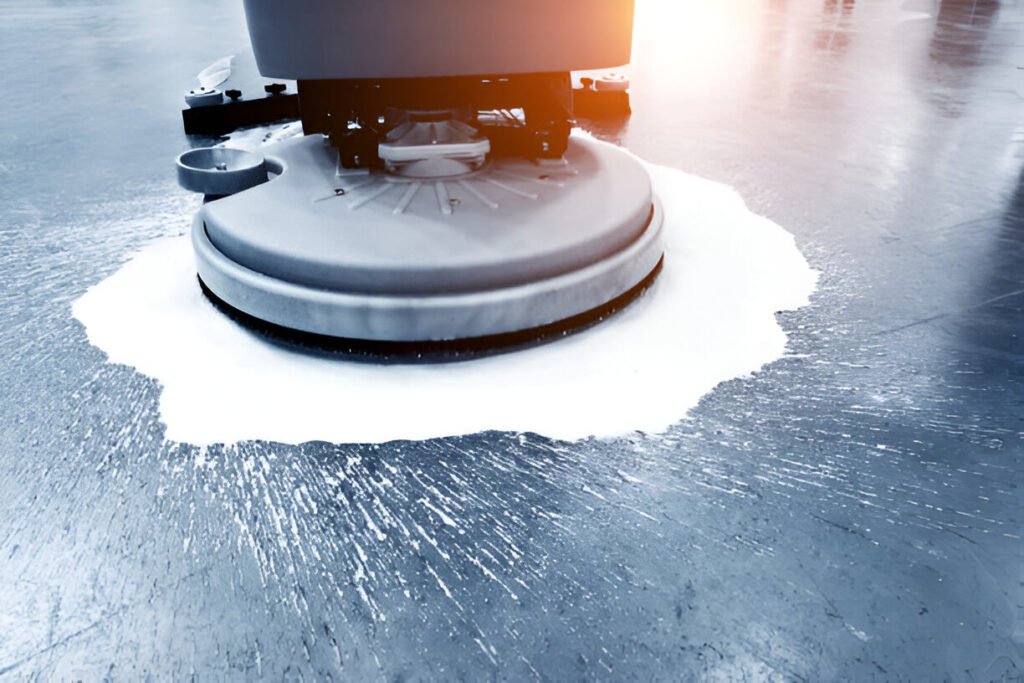Marble polishing is the process of restoring marble surfaces to their original shine and beauty. It removes scratches, stains, and dullness to make marble look brand new again. This process uses special tools and techniques to bring back the natural sparkle that makes marble so beautiful.
What is Marble?
Marble is a special type of rock that forms deep underground. It’s made when limestone gets heated and pressed for millions of years. This creates the beautiful patterns and colors we see in marble.
Marble is soft compared to other stones. This makes it easy to scratch or damage. But it also means we can polish it to make it shine like a mirror.
It comes in many colors. White marble is most common, but you can find pink, green, black, and many other colors. Each piece of marble has unique patterns that make it special.
People use marble everywhere. You’ll find it on floors, countertops, walls, and even statues. It’s been popular for thousands of years because it looks so elegant.
Why Does Marble Need Polishing?
Marble doesn’t stay shiny forever. Daily use makes it lose its sparkle. Here’s what happens to marble over time:
Scratches appear easily. Walking on marble floors with shoes leaves tiny scratches. Cutting food on marble countertops also creates scratches.
Stains soak in. Marble is like a sponge. Spills from coffee, wine, or juice can soak into the stone and leave permanent stains.
It gets dull and cloudy. Even without scratches, marble loses its shine from daily cleaning and use. It starts looking foggy instead of crystal clear.
Etching happens from acids. When lemon juice, vinegar, or other acidic things touch marble, they eat away at the surface. This leaves white, chalky marks.
What is Marble Polishing?
Marble polishing is like giving your marble a complete makeover. It’s a step-by-step process that brings back the shine and removes damage.
It’s different from cleaning. Regular cleaning just removes dirt from the surface. Polishing actually changes the surface of the marble to make it smooth and shiny again.
It uses special abrasives. The process involves using a series of increasingly fine abrasives to smooth and polish the surface. Think of it like using different grades of sandpaper, starting rough and ending very smooth.
Water is used throughout. The process starts with diamond abrasive pads, which are used wet to minimize dust by capturing it as slurry. This keeps dust down and helps the process work better.
It reveals fresh marble underneath. Polishing removes the damaged top layer to show the beautiful, undamaged marble hiding beneath.
The Marble Polishing Process
Professional marble polishing follows specific steps to get the best results. Here’s how it works:
Step 1: Deep Cleaning
First, the marble gets a thorough cleaning. All dirt, soap buildup, and surface stains are removed. This lets the polisher see the real condition of the marble.
Special cleaners are used. Regular cleaning uses a pH-neutral cleaner and dish soap diluted in warm water works wonders. These cleaners won’t damage the marble like harsh chemicals would.
Everything gets removed. All furniture and items are moved away from the marble surface. This gives complete access for the polishing work.
Step 2: Grinding (For Heavily Damaged Marble)
If the marble has deep scratches or severe damage, grinding might be needed. This removes more of the surface to get below the damage.
Diamond pads are used. These are like super-strong sandpaper that can cut through marble. They start very rough to remove damage quickly.
Water keeps things cool. Grinding creates heat, so water is sprayed constantly to keep the marble from getting too hot.
Step 3: Honing
This process is similar to grinding, but not as aggressive as that. The grits and materials are not as rough as those used in grinding and honing will remove trivial to moderate scratches and etch marks.
Multiple grits are used. The process starts with rougher grits and moves to finer ones. Each step removes the scratches left by the previous step.
The surface becomes smooth. After honing, the marble feels smooth to touch, but it’s not shiny yet. It looks more like a matte finish.
Step 4: Polishing
This is where the magic happens. Polishing brings out the shine and makes the marble look like glass.
Very fine abrasives are used. These are so fine they’re almost like powder. They remove the tiny scratches left by honing.
Polish systematically: Begin with the coarsest pad and work in small, overlapping circular motions. Ensure even coverage across the entire surface. This makes sure every inch gets the same treatment.
Multiple passes are needed. Each polishing pad gets used several times to build up the shine gradually.
Step 5: Sealing
After polishing, many professionals apply a sealer to protect the marble.
We use a marble sealer and apply it liberally with a rag. This creates an invisible barrier that helps prevent stains and etching.
It’s not permanent. Sealers wear off over time and need to be reapplied every 1-3 years depending on use.
Tools and Materials Used
Professional marble polishing requires special equipment that most people don’t have at home.
Professional Equipment
Floor polishers are big machines that spin polishing pads. They’re heavy and powerful, designed to work on large areas quickly.
Hand polishers are smaller tools used for edges, corners, and detailed areas that big machines can’t reach.
Diamond polishing pads come in different grits from very rough to extremely fine. Each grit serves a specific purpose in the process.
Water systems keep the work area wet and control dust. Professional setups have pumps and hoses to manage water flow.
Materials Needed
Polishing compounds are special pastes or powders that help create the final shine. Different compounds work better on different types of marble.
Sealers protect the finished marble from future damage. There are different types for different uses and preferences.
Cleaning supplies remove dust and debris between polishing steps. pH-neutral cleaners and soft, non-abrasive cloths are essential.
DIY vs Professional Polishing
Many people wonder if they can polish marble themselves or if they need to hire professionals.
DIY Marble Polishing
DIY marble polishing can save costs, but it has limitations. Home polishing kits are available, but they work best on marble that’s not heavily damaged.
It’s good for maintenance. If your marble just needs a light touch-up, DIY kits can help restore some shine.
Grab some polishing powder specifically designed for marble if you have a natural stone. Make sure any products you buy are safe for marble.
Results are limited. DIY polishing kits are available, they generally do not provide the same results as professional services.
Professional Polishing
Hiring professionals for marble polishing is recommended for superior results. They have the right tools and experience to handle any situation.
They can fix serious damage. Professional companies do everything from grinding, honing, polishing, and even buffing to restore the shiny effect of the marble surface.
Consider professional help for extensive damage or uncertainty about the process. If you’re not sure what to do, it’s better to call experts.
They guarantee results. Most professional services offer warranties on their work, so you know you’ll get good results.
Cost of Marble Polishing
The cost of marble polishing depends on several factors, but here are typical price ranges:
Professional Service Costs
On average, homeowners can expect to pay between $3 to $8 per square foot for professional marble polishing. This includes labor, equipment, and materials.
For a standard-sized room, the total cost can range from $300 to $800. Larger areas cost more, but the price per square foot often goes down.
Powder rooms are slightly less, at $550 to $1200 depending on the condition and size.
Factors That Affect Cost
Condition of the marble is the biggest factor. Heavily damaged marble costs more to restore because it needs more work.
Size of the area affects total cost. Bigger jobs usually get better per-square-foot pricing.
Location matters. Prices vary by region, with big cities typically costing more than small towns.
Type of marble can affect pricing. Some marbles are harder to work with than others.
Benefits of Marble Polishing
Polishing marble provides many benefits beyond just making it look good.
Appearance Benefits
Restores original beauty. Polished marble looks like it did when it was first installed. The colors become vibrant and patterns stand out clearly.
Creates mirror-like shine. Well-polished marble reflects light like a mirror, making rooms appear brighter and more spacious.
Removes stains and scratches. Most surface damage disappears completely after professional polishing.
Practical Benefits
Easier to clean. Smooth, polished marble is much easier to keep clean than rough, damaged surfaces.
More hygienic. Smooth surfaces don’t harbor bacteria and dirt like rough, scratched surfaces can.
Increases home value. Beautiful marble floors and countertops add significant value to your home.
Lasts longer. Regular polishing helps marble last much longer by removing damage before it gets worse.
How Often Should You Polish Marble?
The frequency of marble polishing depends on how much the marble gets used.
High-Traffic Areas
Kitchen countertops might need polishing every 1-2 years. They get used constantly and are exposed to many potential staining agents.
Entrance floors also need frequent attention, maybe every 1-2 years, because they get walked on constantly.
Low-Traffic Areas
Bathroom vanities might only need polishing every 3-5 years if they’re well-maintained.
Decorative walls might go 5-10 years between polishings since they don’t get touched much.
Signs It’s Time to Polish
Loss of shine is the most obvious sign. If your marble looks dull instead of reflective, it’s time.
Visible scratches that you can feel with your fingernail mean polishing is needed.
Stains that won’t clean usually require polishing to remove completely.
Rough texture means the surface has been damaged and needs restoration.
Maintaining Polished Marble
Once your marble is polished, proper maintenance keeps it looking great longer.
Daily Care
Regularly clean your marble surfaces using a pH-neutral cleaner and a soft, non-abrasive cloth or mop. This prevents buildup of dirt and grime.
Wipe spills immediately. Don’t let liquids sit on marble, especially acidic ones like juice or wine.
Use a soft, damp cloth and a few drops of dawn dish soap for regular cleaning.
What to Avoid
Avoid acidic or abrasive cleaners like vinegar or lemon juice. These will damage the polished surface.
Don’t use rough cleaning pads. Steel wool and abrasive sponges will scratch the marble.
Avoid harsh chemicals. Bleach and ammonia-based cleaners can damage marble over time.
Protective Measures
Use cutting boards on marble countertops. Never cut directly on the marble surface.
Use coasters under glasses and bottles to prevent rings and etching.
Place mats under toiletries and soap dispensers to prevent damage from drips.
Common Marble Problems and Solutions
Understanding common marble problems helps you know when polishing is needed.
Etching
What it is: White, chalky marks caused by acids touching the marble.
How it happens: Lemon juice, wine, vinegar, or cleaning products can cause etching.
Solution: Light etching can be polished out. Deep etching might need professional grinding.
Scratches
What causes them: Walking on floors with dirty shoes, dragging objects across surfaces, or cutting on countertops.
Types: Surface scratches can be polished out. Deep scratches might need grinding first.
Prevention: Use mats, felt pads under objects, and cutting boards.
Stains
Organic stains come from coffee, wine, food, or leaves. These often respond well to polishing.
Oil stains from cooking or cosmetics can be tricky but usually come out with professional treatment.
Rust stains from metal objects need special treatment before polishing.
Dullness
Caused by: Daily wear, improper cleaning, or buildup of soap and dirt.
Solution: Professional polishing restores shine completely.
Prevention: Regular proper cleaning and occasional professional maintenance.
Choosing a Professional Service
If you decide to hire professionals, here’s what to look for:
Research and Credentials
When choosing a marble polishing service, consider their experience, reputation, and customer reviews. Look for companies that specialize in natural stone.
Check licenses and insurance. Make sure they’re properly licensed and insured to protect yourself.
Ask for references. Good companies are happy to provide references from recent customers.
Getting Quotes
Get multiple quotes to compare prices and services. Prices can vary significantly between companies.
Ask what’s included. Some quotes include sealing, others charge extra for it.
Understand the process. Make sure they explain exactly what they’ll do and how long it will take.
Questions to Ask
How long have you been in business? Experience matters with delicate marble work.
What equipment do you use? Professional-grade equipment produces better results.
Do you offer warranties? Good companies stand behind their work.
Can you provide before/after photos? This shows the quality of their work.
The Bottom Line
Marble polishing is a specialized process that brings damaged, dull marble back to life. Professional polishing is recommended for restoring shine, removing stains, and repairing damage.
Every 1–3 years is ideal, depending on usage and wear for most marble surfaces. Regular maintenance keeps marble looking beautiful and extends its life significantly.
While DIY options exist for light maintenance, professional polishing provides the best results for restoration work. The investment in professional polishing pays off in beauty, durability, and home value.
Proper care after polishing keeps marble looking great longer. With the right maintenance and occasional professional polishing, marble can maintain its beauty for generations.


